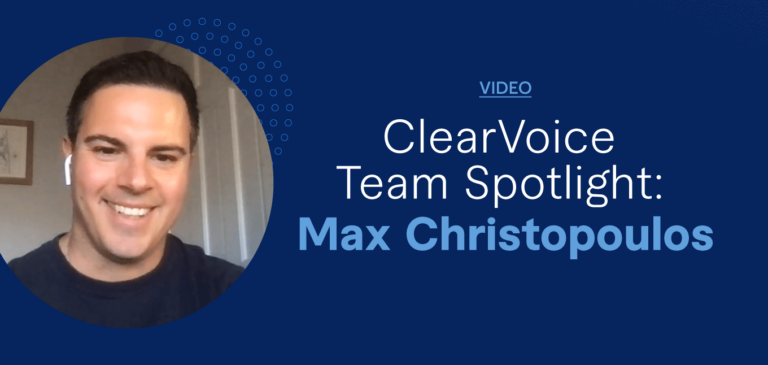Digital marketing is an evolving field. Trends come and go, and user expectations change. But what remains constant is the fact that for different marketing strategies to succeed, they need content that resonates with target audiences.
In this guide, we’ll look into how content marketing integrates with various marketing tactics, including search engine optimization (SEO), social media marketing, email marketing, and online advertising. We’ll also discuss best practices for creating a unified digital marketing strategy.
Content Marketing and SEO: Why They’re Better Together
SEO, in a nutshell, is the practice of optimizing website content to improve search engine visibility, with the goal of increasing organic traffic. It’s different from search engine marketing (SEM) in that the latter involves both organic and paid search.
Content marketing and SEO complement each other in various ways:
Keyword integration
Create content that incorporates target keywords naturally. For example, a banking institution could create high-quality financial content around keywords like “high-yield savings accounts” or “personal loans for small businesses.”
By producing valuable content focused on these topics, you can improve your visibility in search results and drive more traffic from prospects who are actively searching for what you sell.
Alignment with user intent
User intent, also known as search intent, can be informational (seeking information), navigational (looking for a specific page or website), transactional (intending to make a purchase), or commercial (researching products or services before deciding). Create content that aligns with what users have in mind when conducting a search query.
For instance, fintech companies can create educational content for users searching “how blockchain works” (informational intent) or craft detailed product comparison guides for users researching “best online banks” (commercial intent). Addressing user intent helps engage your target audience and convert them into customers.
Authority building
Consistently producing valuable content helps search engines recognize your website as a source of authoritative information.
For instance, investment firms can use content marketing to build authority with in-depth guides on retirement planning or cryptocurrency investments. This helps position them as trusted resources and increases trust.
Link building
Link building is the practice of acquiring hyperlinks — also called “backlinks” or “inbound links” — from other websites to your own. Consistently publish relevant, compelling content to increase your chances of getting a backlink from reputable sites.
While this is important for all industries, it’s crucial for investment firms or banks aiming to establish themselves as thought leaders in financial services.
Content Marketing and Social Media: A Perfect Match
Social media marketing involves posting content on platforms like Facebook and LinkedIn to achieve specific marketing and business goals. When paired with content marketing, benefits can include:
- Increased content reach: Billions of people use social media. This means the platform can extend the lifespan of your content exponentially. Shares and reposts increase content reach and visibility, which can drive more traffic back to your website.
- Real-time interaction with target audiences: Social media enables brands to interact with their audiences in real-time, address questions or concerns, and have them participate in discussions through live videos or stories.
- Improved SEO performance: Social signals such as shares, likes, and comments can indirectly influence search rankings. While they’re not a ranking factor per se, “social profiles and links can affect your brand’s appearance in search results,” according to Search Engine Journal.
Email Marketing and Content Strategy: Driving Higher Conversion Rates
Email marketing uses email to send targeted messages. It ensures that carefully crafted content reaches the right people at the right time. Marketers use email marketing to promote products or services, announce special offers, share content, and communicate with customers.
Content marketing provides important information, engages readers through storytelling, and encourages them to take action through CTAs.
Personalizing emails with targeted content
To improve email conversion rates, readers must find your emails relevant to their needs.
For example:
- Tailor your email content based on recipients’ browsing history or past purchases. For instance, if a customer recently viewed a product on your website, include personalized recommendations or special offers related to that product in your email.
- Segment your email subscribers based on criteria such as demographics, behavior, or preferences. Create content customized for each segment. This ensures your emails resonate with the specific interests of each group.
Content-driven email campaigns
If you want to experiment with content-driven email campaigns, here are some examples:
- Educational content series: Develop a series of emails that educate your subscribers on industry trends or product usage tips.
- User-generated content highlights: Feature user-generated content in your emails. This can encourage customers to share their own experiences with your products or services.
- Exclusive content previews: Give readers a sneak peek or early access to upcoming offers. This creates a sense of exclusivity and encourages subscribers to remain subscribed to your emails.
Content Marketing in Online Advertising
Without captivating, scroll-stopping content, online advertising efforts will likely fall short. This is why content marketing is central to online advertising strategies such as pay-per-click (PPC), social media advertising, and display advertising.
Creating content-focused ad campaigns
Content-focused ad campaigns are initiatives that revolve around creating and promoting content to attract and retain a target audience. Instead of promoting a specific product or service, these campaigns aim to provide value through informative, educational, or entertaining content.
Here are some examples:
- Blog posts and articles: Develop value-packed blog posts or articles that align with your target audience’s interests. Use these as the basis for PPC campaigns. Create ad copy that highlights key points.
- Visual content: Design visually appealing infographics and use them in your display advertising campaigns.
- Video content: Use videos for social media advertising, especially on Facebook or Instagram. Create videos that tell your brand’s story, demonstrate the key features of your product, and showcase customer testimonials. Depending on your industry and target market, you can also create documentaries or animated explainer videos.
Measuring the ROI of content-driven ads
To gauge how your content-driven ads are performing, these metrics offer insights into various aspects of your campaigns:
- Engagement: Clicks, likes, shares, and comments provide a window into the effectiveness of your social media ads.
- Conversion: Conversions such as signups and purchases measure the results of your PPC campaigns.
- Website analytics: Check your website’s analytics for metrics like time on page, bounce rate, and pages per session to understand the effect of content-driven ads on user behavior on your site.
- Customer lifetime value (CLV): This metric helps assess the long-term impact of online ads and provides insight into the overall ROI.
Another way to measure the effectiveness of your online ads is by asking your customers. Collect feedback through surveys or reviews to understand how your ads affect their perception of your brand.
Creating a Unified Digital Marketing Strategy
A unified digital marketing strategy combines various online marketing channels, ensuring every campaign aligns with overarching business goals.
Here are tips and best practices for creating one:
- Establish clear brand messaging: Define your brand’s core values, mission, and unique selling propositions. Make sure this messaging stays consistent across channels.
- Created an integrated content calendar: Your content calendar outlines when and where to publish upcoming content. It includes information such as keywords, content topics or themes, publication dates and times, content type, target audience, distribution channels, content owners and contributors, campaigns and promotions, and upcoming holidays or events.
- Refine your keyword strategy: This prevents keyword cannibalization and solidifies your brand’s authority on specific topics, which can help improve search engine rankings.
- Plan social media campaigns that align with your content themes: Each social media platform can focus on different aspects of your content. For example, share visuals on Instagram, such as behind-the-scenes footage or professional insights on LinkedIn.
- Align paid advertising with content goals: Create ad creatives that align with content goals.
- Encourage cross-channel collaboration: Conduct regular meetings to facilitate idea exchange between teams responsible for different marketing channels. Establish communication and file-sharing processes. Ensure everyone understands the overall strategy.
- Regularly review and adjust strategies: Analyze performance metrics regularly across channels. Be prepared to adjust your strategies accordingly.
- Use the right tools and platforms: These can include content management systems (CMS) like WordPress, marketing automation tools like Marketo, social media management systems like Buffer, analytics tools like Google Analytics, and customer relationship management (CRM) platforms like Salesforce.
Bridging Gaps: How Content Holds Everything Together
Content is what built the Internet, and it will remain a driving force in shaping its future. Content fuels conversations, unite communities, and enable every internet user to express themselves.
In marketing, valuable content can take many forms, including compelling storytelling, informative articles, engaging videos, and interactive campaigns. And with great content, every other digital marketing strategy stands to benefit — whether SEO, social media, email marketing, or online advertising.
To learn more about how ClearVoice can help you create winning content, reach out today to speak with an expert content strategist.







